The best tips from a Certified Sleep Consultant on how to help your kids through Daylight Savings Time.
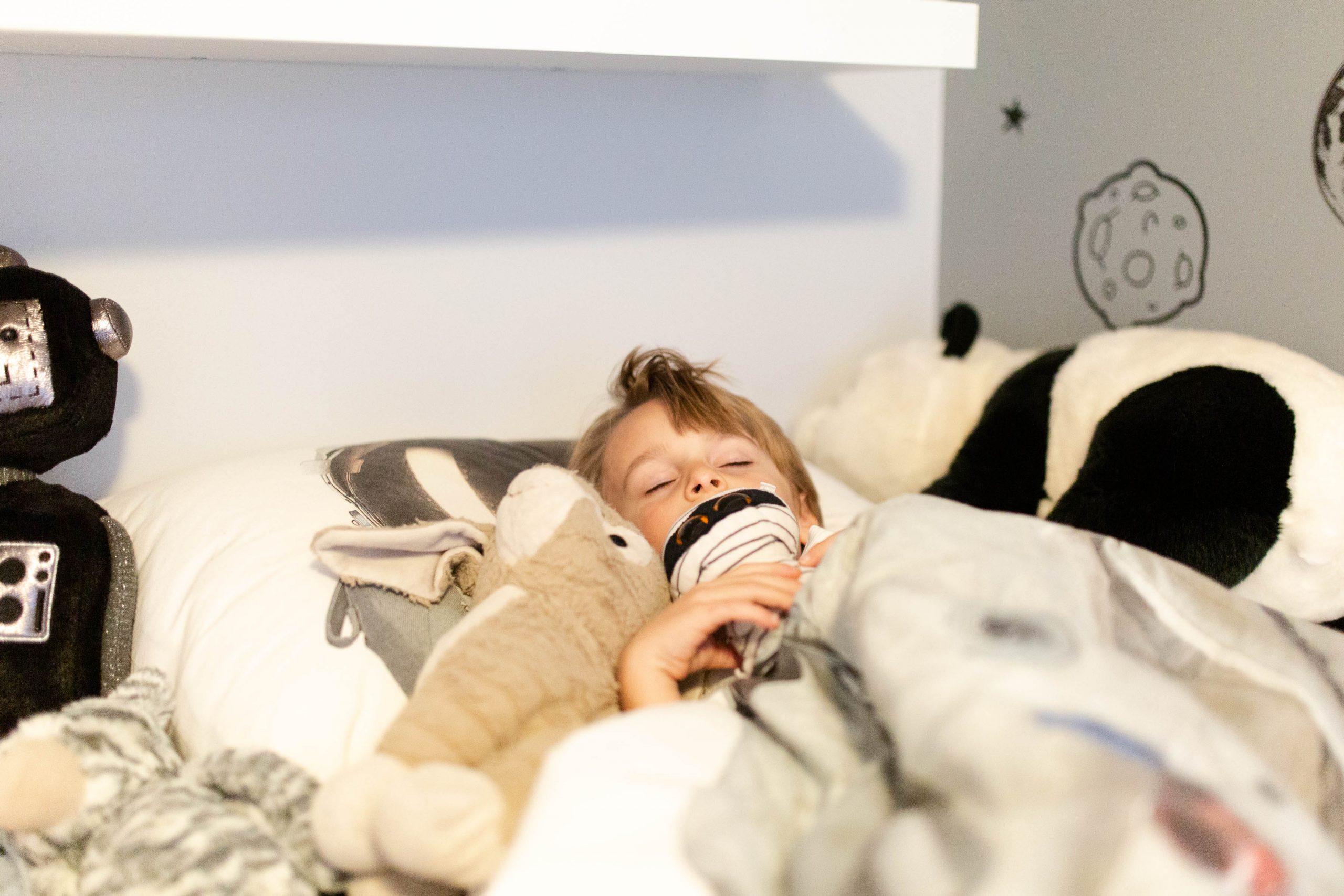
It’s only an hour, but boy can that setting our clocks forward or back ever mess with our wellbeing! This Sunday, November 1st, we revert to Daylight Savings Time, where we “fall back” one hour. Sounds nice – an extra hour of sleep – but that’s rarely the case if you’re a parent! Most kids don’t get the memo to sleep in, so it’s best to condition them as best you can beforehand.
I reached out to my friend Pam Edwards, a Certified Pediatric Sleep Consultant, for a few tips. The general idea? To preserve our emotional and mental health! We hired Pam when we were sleep training Wyatt at seven months old, and it’s one of the best investments we’ve ever made. She’s so great! Read about that experience here.
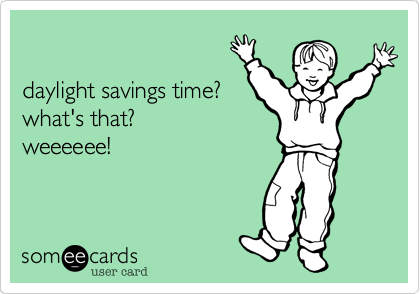
Daylight Savings: The Lowdown From Pam
- On Sunday, November 1st: the sun will be rising an hour earlier than it normally does (meaning we have an extra hour of sunlight in the morning), and the sun will be setting an hour earlier than it normally does (meaning we have an hour less sunlight in the evening).
- On Sunday, November 1st, if we haven’t implemented any plan in advance for DST, your child will be waking an hour earlier than he normally does [technically he’s not really waking earlier, the clock is just telling us it’s earlier]. So, if he normally wakes up at 7:00 am, he will now be waking up at 6:00 am.
- On Sunday, November 1st, if you haven’t implemented any plan in advance for DST, your child will be wanting to go to bed an hour earlier than he normally does. So, if he normally goes to bed around 8:00 pm, he will now be wanting to go to bed around 7:00 pm.
If you don’t want your child’s schedule to shift earlier by an hour [according to the clock], we may need to plan in advance and shift your child’s schedule an hour later beforehand.
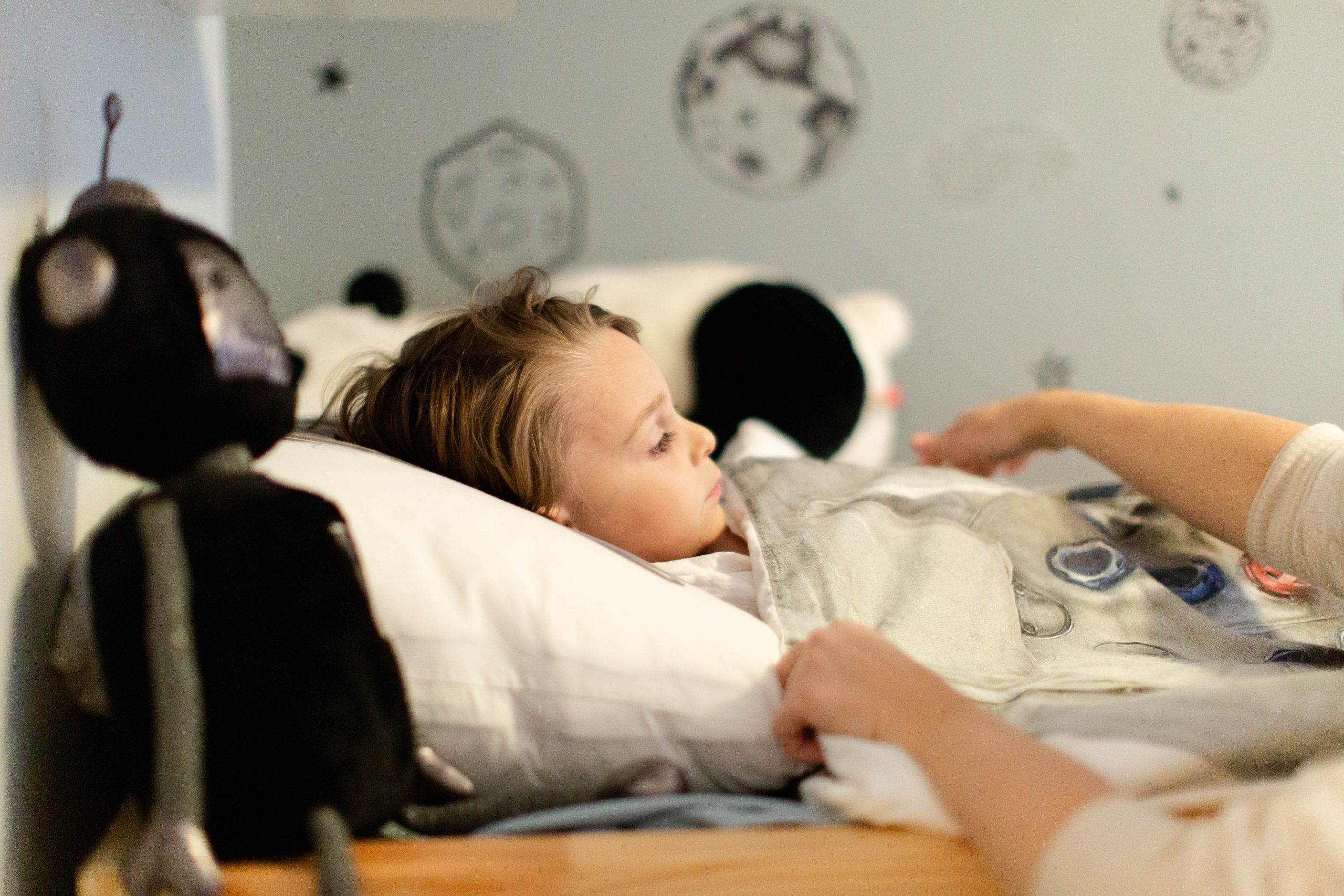
#1: Examine Your Child’s Sleep Environment
Melatonin is a hormone that regulates our internal body clock. When Daylight Saving Time occurs, it throws that cycle out of whack [like the jet lag we experience when traveling time zones, but often worse]. Controlling light and dark near sleep times is always important, but even more important at this time of the year. When ‘falling back’, the sun is rising earlier in the morning, so to help ensure your child is not up with the sun, it’s important to make sure their room is dark in the morning. Conversely, help them adjust to their new bedtime by exposing them to natural light in the evening [sunlight is best, but keeping the lights bright in your house works as well]. Take a look at your child’s screen time at/around Daylight Saving Time, as devices can reduce sleep time, sleep quality, and daytime alertness. This is because of the light exposure, as well as the fact that they engage the brain. Shutting off all screens 30-60 minutes [at minimum] before bedtime is key.
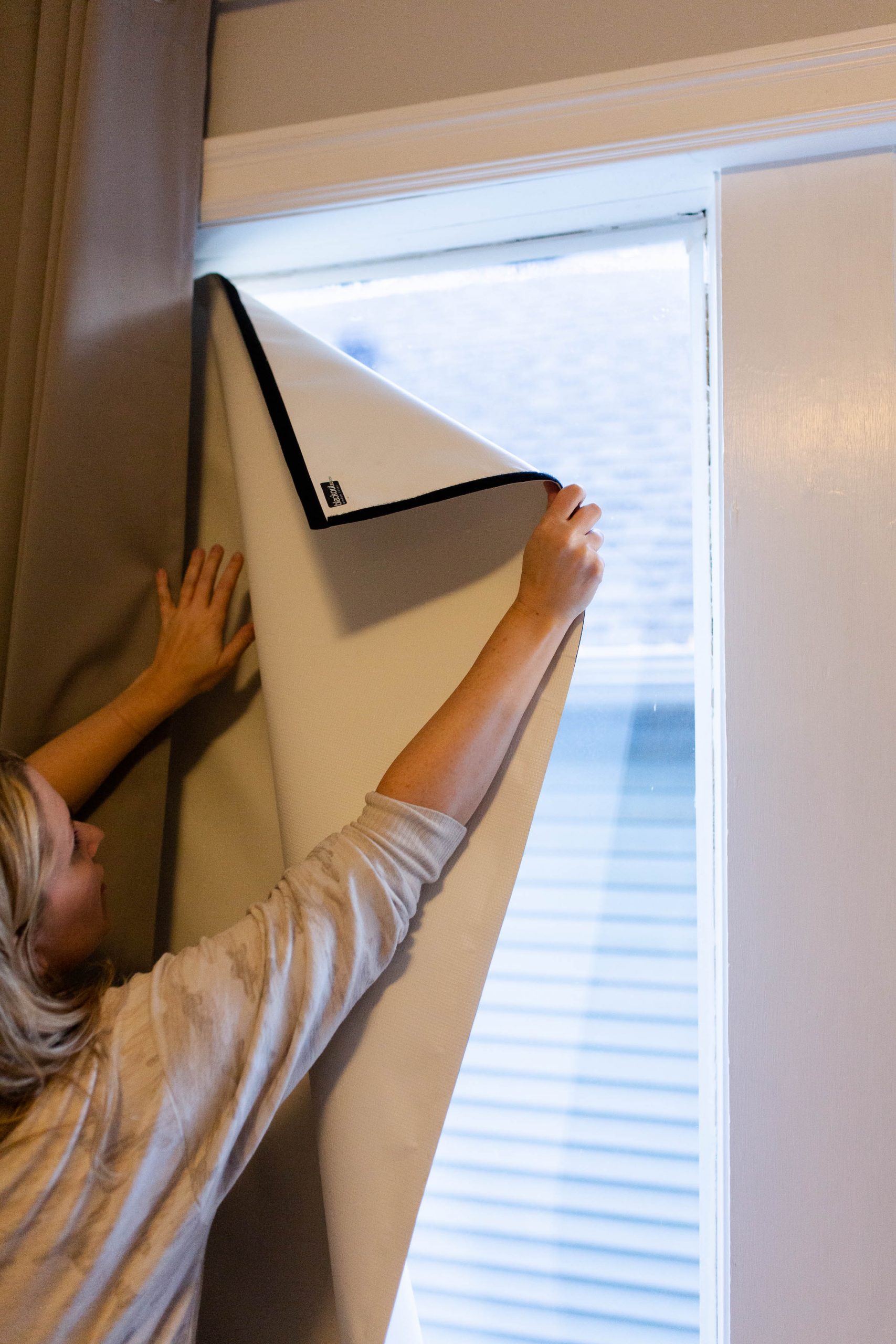 Ever since Wyatt was a baby, we’ve used these blackout blinds in his room. They are super easy to set up via velcro strips around the inside of your window. We’ve also gone through a couple of continuous white noise machines. This is the one we’re using now.
Ever since Wyatt was a baby, we’ve used these blackout blinds in his room. They are super easy to set up via velcro strips around the inside of your window. We’ve also gone through a couple of continuous white noise machines. This is the one we’re using now.
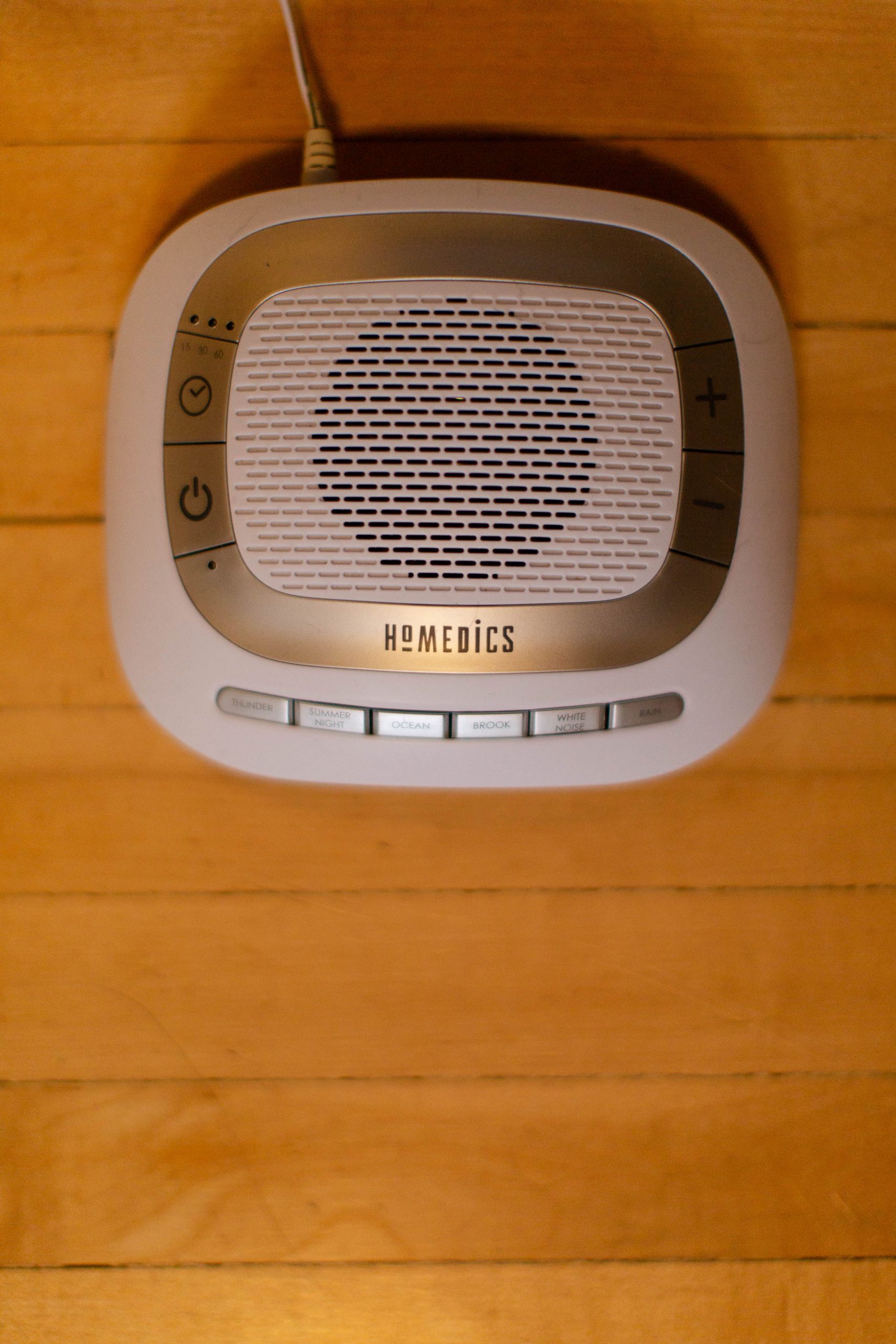
#2: Look at Routines, Not Just Sleep Times
On the Sunday after Daylight Saving Time, not only are we trying to shift our children’s sleep
schedules back to normal, but we’re also aiming to shift their routines as close to normal
as possible. Having a consistent bedtime routine is key at this time as well, as the routine is what
cues our bodies for sleep. This might mean taking a bath [including a bath/shower during the
routine on Sunday, November 1st, as it promotes melatonin production!], brushing teeth/jammies, reading a book, and then lights out. The routine doesn’t need to be long and drawn out, it just needs to be consistent and predictable.
#3: Shift Slowly Before the Time Change
If you are hoping to maintain your child’s current sleep schedule after Daylight Saving Time, advance prep can help minimize the effects of the time change. For a child that is three years or older, try pushing their sleep times 20 minutes later starting three days before DST. Don’t focus too much on the time your child is waking, as we have little control over that. Instead, focus on what time your child is going to bed.
For example: K is 4 years old, and typically wakes around 6:30am. She has a nap everyday from 1:30-3:00pm and goes to bed at 8:00pm. On Thursday, her mom pushes her nap to 1:50pm, and she sleeps from 1:50-3:20pm. She then goes to bed at 8:20pm. The next day (Friday), she naps from 2:10pm-3:40pm, and goes to bed at 8:40pm. On Saturday, she naps from 2:30pm-4:00pm, and goes to bed at 9:00pm. The next day is Daylight Saving Time, and she wakes up at 6:30am ‘new time’ [7:30am old time] and her nap moves back to 1:30-3:00pm, with her normal 8:00pm bedtime.
If your child does not nap, you’d simply shift their bedtime later in 20 minute increments. For a school-aged child, we may also be able to shift bedtime in 30 minute increments starting two days before Daylight Saving Time. If you are making a bigger jump, it’s important to weigh the impact of whether your child will be able to handle the sleep loss that will come with it for a few days. If DST snuck up on you, and you didn’t have a chance to prepare in advance, you can always use the above strategy after Sunday as well [and you could shift even slower, in 15 minute increments instead]. And even if you do absolutely no work before OR after, your child will still adjust to the new time, likely taking about a week to do so.
#4: How Much Sleep Your Child Should Be Getting
Your child can adjust more easily to this change if they’re well-rested ahead of time. Sleep begets sleep, so the more sleep your child gets, the easier falling asleep and staying asleep will be. H
So, how much sleep does your child need?
3 years old: 11-12 hours
4-6: 10-12 hours
7-9: 10-11 hours
10-12: 9-11 hours
13-18: 8-10 hours
#5: Use a Tot Clock/Alarm Clock
I love using a tot clock for kids aged three and up, as it helps to discourage early wake-ups, yet provides some independence at sleep times. The clock creates a visual as to when it is okay to be awake and when they should be sleeping [or at the very least, staying in their beds/bedrooms]. If you are using a tot clock [such as the Gro Clock], make sure to set it to the new time before the morning on Sunday, to hopefully encourage your child to stay in bed and try to rest until their usual wake-up time. Even if you do not use a tot clock, you can subtly discourage early wake-ups by not starting your daytime activities until the time you want your child to be awake. Delay breakfast and TV time, and encourage independent time in a dimly-lit room instead.
#6 Give Your Child Grace
Time changes are hard on everyone, children included. I do find that children are much less affected by time changes than us adults are, and this time change in particular is actually easier on our bodies than the ‘spring forward’. Nonetheless, if you notice some extra crankiness, irritability, tantrums, and meltdowns – the time change may be the culprit. Give your child lots of opportunities to rest, and have quiet time in the week proceeding Daylight Saving Time. Just know it can take a full seven days for us all to adjust to the new schedule!
Make sure to check out Pam’s blog and Instagram for all the best baby and toddler sleep tips!
 Wyatt’s Endy Mattress
Wyatt’s Endy Mattress
Part of that good night’s rest is a great mattress! As you know, we’re an Endy family. We recently switched Wyatt’s mattress over to Endy, and he’s loving it! I shared all the reasons we choose this Canadian company in my two-year review here. If you’re looking to upgrade to Endy – I highly recommend it! Shop here.
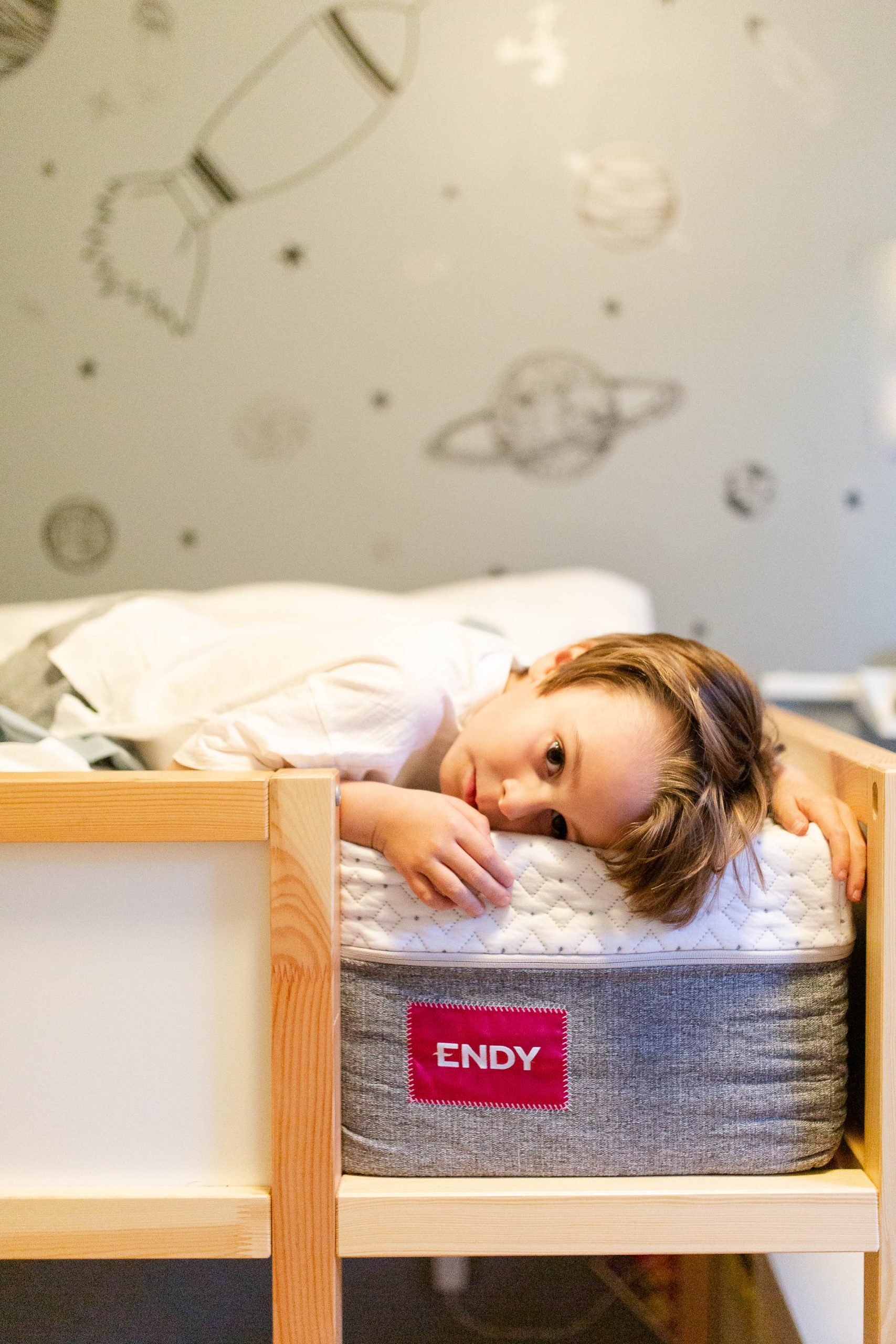
Pin this to your Kids Sleep and Parenting Tips boards. You can follow me on Pinterest here!
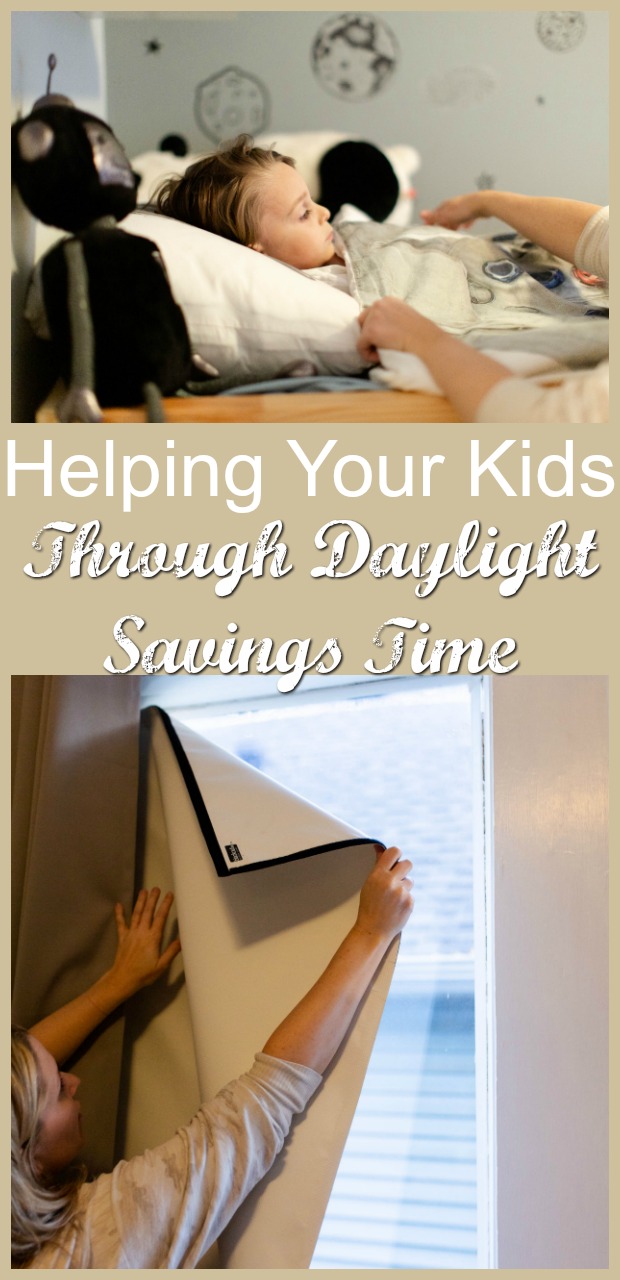
Other Posts You’ll Love:
Create Your Work-From-Home Haven
My Favourite Bedtime Rituals + Two-Year Endy Review
The Best Way To Do A Toy Purge
xx


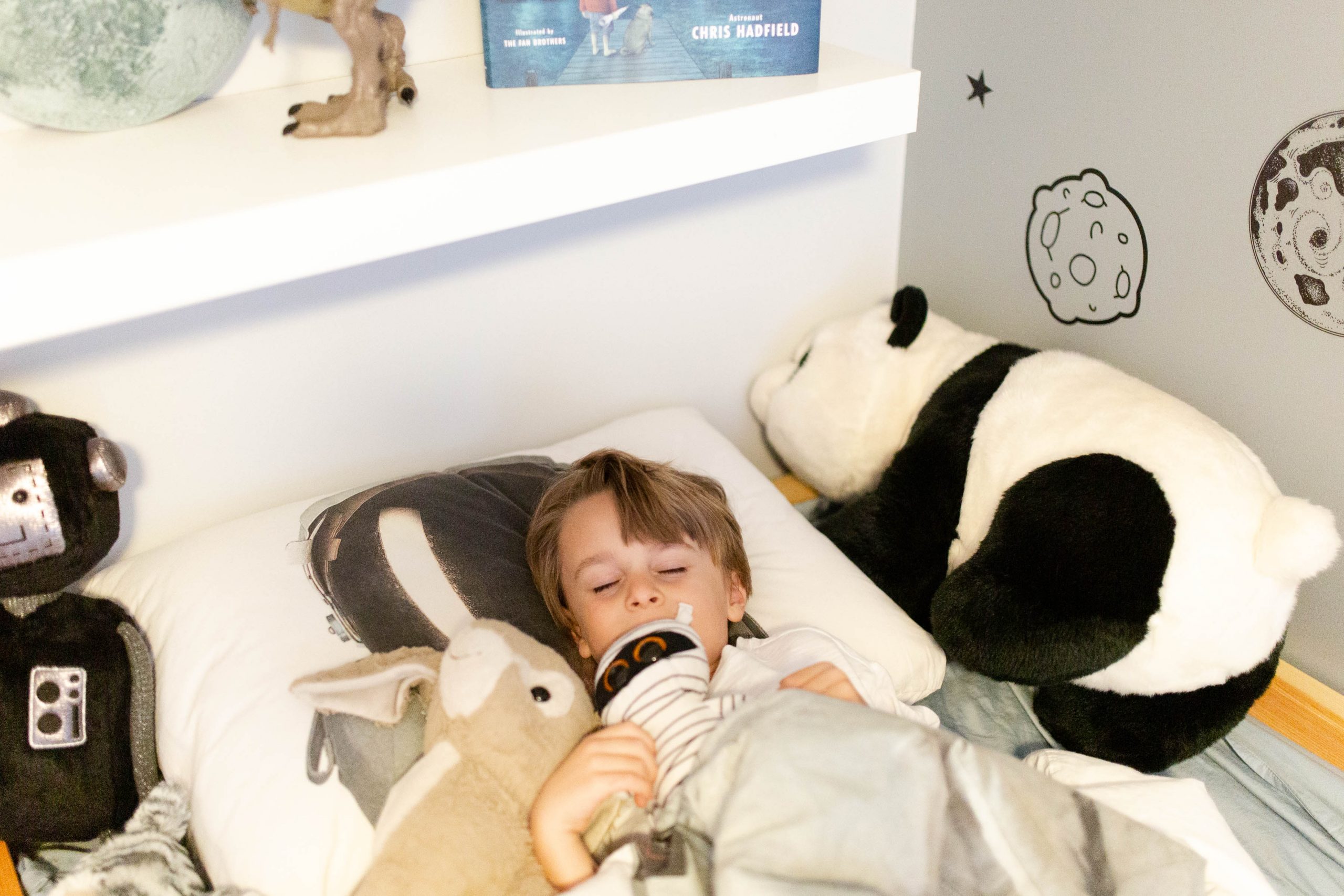

Leave a Reply